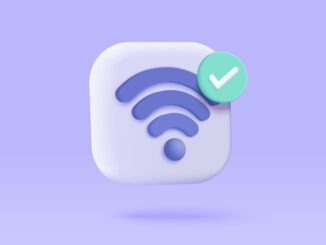
With EdTech increasingly being used in the classroom, having reliable high-speed wifi is no longer a want, but a necessity – here are five reasons why your school might be experiencing wifi issues
CREDIT: This is an edited version of an article that originally appeared on Performance Networks
In the digital age of education, reliable and high-speed wifi connectivity has become an essential component of effective teaching and learning. However, many schools often find themselves grappling with the frustration of poor wifi performance, which can hinder classroom activities, administrative tasks, and student engagement.
From sluggish online research to disrupted virtual lessons, the impact of connectivity issues can be significant. In this article, we delve into the top five reasons that might be contributing to your school’s poor wifi connectivity. By identifying these underlying factors, school administrators and IT teams can take proactive steps to enhance network performance, providing a seamless and productive digital learning environment for both educators and students alike.
Old wifi
On a typical basis, there are three things that schools should be trying to avoid:
- WiFi that only works on 2.4GHz band: As this band has only three available non-overlapping channels, you want to steer clear of this being your only band.
- WiFi that’s SCA(Single Channel Architecture) – In today’s high-density environments, it’s going to struggle. Manufacturers are all now moving away from this architecture.
- WiFi that 802.11,a,b,g,n – also now known as WiFi 1,2,3,4. There are so many enhancements since these standards & WiFi6 or 802.11ax is amazing – so push for an upgrade.
Not enough wifi
The most common issue faced by schools is having too few Access Points(APs)as this leads to coverage gaps.
Even if you have full coverage but your APs are transmitting on full power, it can result in distanced devices slowing things down or not being heard by the APs they are trying to connect back to.
On the face of it, the signal can look ok to you and your device, but if you’re experiencing issues and a lack of APs is not the problem, the likelihood is your device cannot be heard by the AP as you don’t have the same Transmit power. Too few APs also means you may see general capacity issues.
Too much wifi
They say you can’t have too much of a good thing, but that’s certainly not the case when it comes to wifi. By having too many Access Points, it can cause them to have to share Airtime.
This means slower wifi for all APs sharing the same or overlapping channels and this can be as bad or worse than not enough Access Points. A good initial design and configuration can overcome this issue.
Placement
Access Points are designed to be mounted in a certain way as well as at a specific height range. Usually, these are horizontally and not above four metres in height for most Omni-directional APs.
So, if they happen to be mounted incorrectly, they may not cover where you think they should!
When it comes to schools and academies, try not to mount in corridors, especially on walls that have at least two sides. This will result in neither classroom receiving the best WiFi.
Education facilities should be aiming to get devices onto the 5GHz band. However, one thing to note is that it has a shorter wavelength than the other 2.4GHz band and doesn’t go through walls as well.
This can lead to devices choosing the 2.4GHz band over the 5 and not getting access to the best connection point. Something else to note is that long corridors can mean all the APs can see each other so to speak, even if it is indirectly.
Having APs placed like this will Increase interference and also cause the controllers at times to turn the power down where you do not want it to. The controller does not know your physical set-up, only what APs are near each other.
Configuration
Last, but definitely not least, how a school’s wifi is configured could potentially provide another major issue.
Often, people assume they are increasing speed only to be doing the opposite. One example is channel width – 80MHz + widths are never going to work in the real world in 99.9% of cases.
Power settings are another issue. Two scenarios usually crop up with this. Either a) it is left to the controller to decide what’s best or b) it is left to someone without the correct tools or knowledge to measure it properly.
Grouping some APs and giving the controller specific parameters always works best in our experience. But you do need specific tools and knowledge to get this right.
You might also require QoS (Quality of Service) setting up correctly, so certain APPs get priority over others. Certainly, given that everyone is working via applications like Microsoft Teams.



Be the first to comment